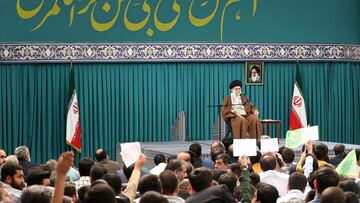WORLD
What are the differences between the Ayatollah of Iran and the President of the country?
The power structure in the Asian country is complex due to the coexistence of the Supreme Leader and the President of Iran. Which has more power?

The death of Ebrahim Raisí, president of Iran, in a helicopter accident has been confirmed. This event has shaken Middle East politics, and there is already talk of replacements for Iran’s presidency. However, the political situation in the country is somewhat complex, since the president of Iran is not the highest authority as there is the figure of the Ayatollah or Supreme Leader.
In Iran, the position of President of Iran is different from that of the US since the executive power is divided with the Supreme Leader, who is the main authority. Both share functions and are very important in the political life of Iran, but they have several differences.
Who is the Ayatollah of Iran?
Since the Islamic Revolution in 1979 and the adoption of the Islamic Republic form of government by Iran, the country has had a President and a Supreme Leader, also called Ayatollah. Since 1989, that position has been held by Alí Khamenei, who was elected by the ‘Assembly of Experts of the Leadership (majles-e khobregân-e rahbari), and who holds power for life.
He is the second supreme leader in the history of Iran, as Ruhollah Khomeini held the position from 1979 to 1989, the year in which he died. The word Ayatolah means ‘sign of God’.
Difference between the Ayatollah of Iran and the President
The main difference is that the Ayatollah is the most influential figure in Iran. He is in charge of the political and religious power of the country and is the Head of State. He is also responsible for the Armed Forces and for supervising other State policies, being the great authority. His position is above any other, he appoints the heads of other institutions.
In a rank just below is the President of the Islamic Republic of Iran. He is elected by popular vote every four years, and is in charge of the daily administration of the country. Their power is limited by the authority of the Supreme Leader, especially in security decisions. Even so, he is in charge of all types of work from international relations to the appointment of the Council of Ministers.
Ultimately, the President is in charge of day-to-day management of the country, but always under the command of the Ayatollah.





